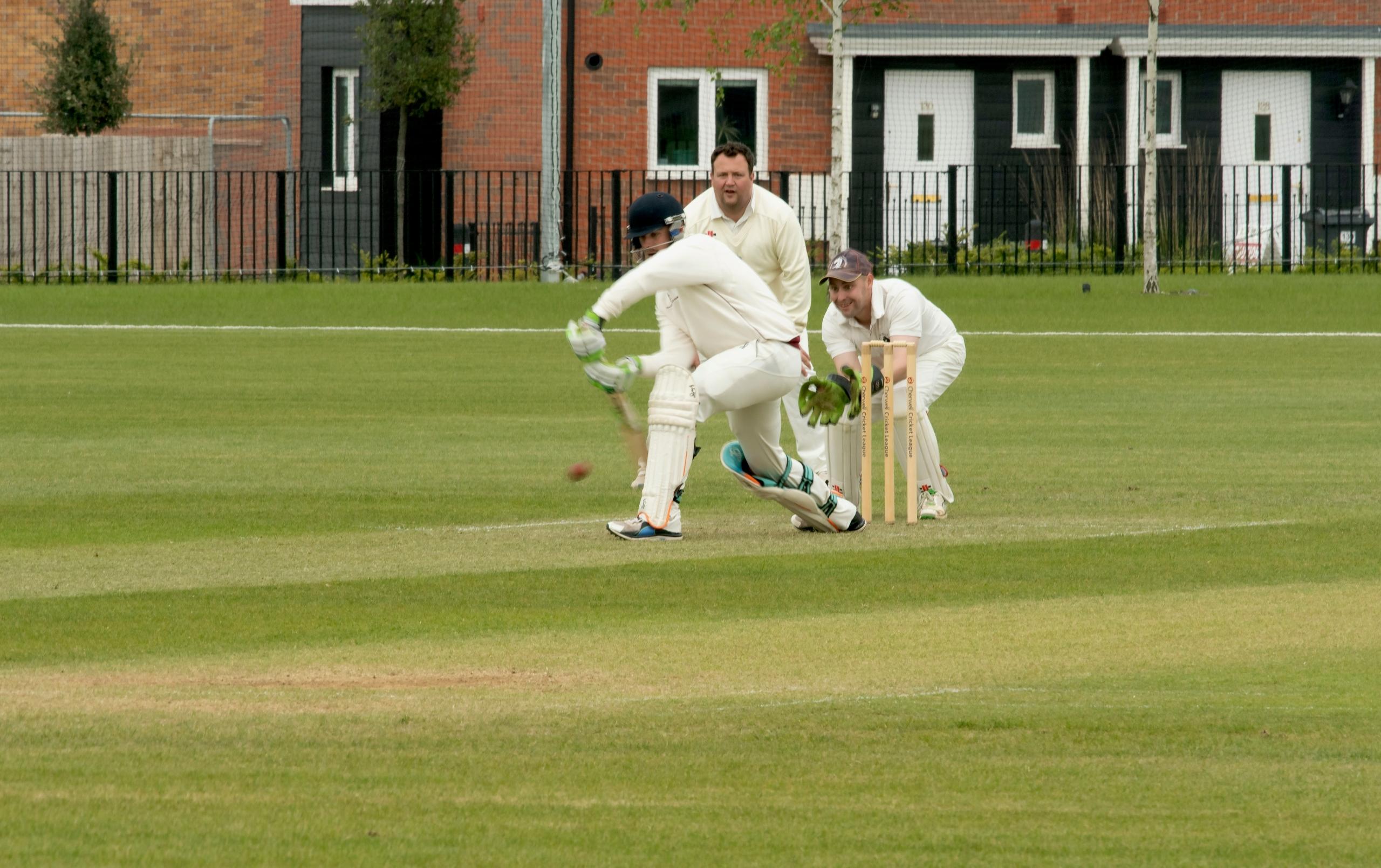Cricket is a sport that has captured the hearts of millions worldwide and boasts a rich and fascinating history which dates back several centuries.
Since cricket has evolved and developed over centuries, it is difficult to attribute its creation to a single individual.
The sport's origins can be traced back to medieval England, where various forms of bat-and-ball games were played in rural communities. While there isn't a definitive founder of cricket, the sport gradually took shape and gained popularity through a series of developments.
One of the earliest references to a game resembling cricket can be found in a 16th-century legal document from Guildford, Surrey, which mentions a sport called "creckett" being played by boys. As the centuries progressed, cricket continued to be played in villages and towns across England. The game became more organised during the 17th century, with the establishment of cricket clubs and the formulation of basic rules.
In this article we explore the intricate tapestry of cricket's history, delving into its early roots, development, and eventual global expansion.

The Cricket Origin Story: 16th to 17th Century
The origins of cricket are shrouded in the mists of time, with early references to the game dating back to the 16th century. Cricket is believed to have been played in Tudor England, where it was enjoyed by both rural and urban communities.
Initially, it was a simple bat-and-ball game, with players using a curved stick to hit a ball made of wood or leather.
The rudimentary nature of early cricket meant that it was often played in open fields, village greens, or even on the streets.
By the 17th century, cricket had gained popularity and had become a well-established pastime in England.
The first recorded match took place in 1646, with evidence suggesting that the game was already ingrained in the culture of the time. Cricket's popularity continued to grow, and in 1697, the first known reference to cricket in a legal document was recorded, highlighting the game's increasing significance.

Expansion in the 18th Century
The 18th century marked a crucial period in the evolution of cricket, as the game began to undergo formalisation. Cricket clubs and societies emerged, contributing to the establishment of rules and regulations.
One pivotal moment was the formation of the Hambledon Club in 1760, which played a significant role in codifying the game's laws.
During this era, cricket started to gain recognition beyond the borders of England. The sport's expansion was propelled by British colonial influence, as it spread to other parts of the British Empire.

The 19th Century: The Birth of International Cricket
The 19th century witnessed cricket's transition from a primarily domestic game to an international spectacle. The formation of the Marylebone Cricket Club (MCC) in 1787 played a pivotal role in standardising the rules, and its influence extended beyond England's shores.
In 1844, MCC formulated the first official Laws of Cricket, a landmark moment that laid the foundation for the modern game.
The spread of cricket continued apace through the British Empire. In 1844, Canada hosted North America's first recorded cricket match, and by the mid-19th century, the sport had firmly taken root in Australia and the West Indies. The inaugural international cricket fixture occurred in 1844 when the United States played Canada, marking the beginning of a new era in the sport.
Australia emerged as a cricket powerhouse during the 19th century, and the first-ever Test match took place between Australia and England at the Melbourne Cricket Ground in 1877. The Ashes series, which began in 1882 after Australia's historic victory over England, further intensified the rivalry between the two nations and became one of cricket's most celebrated competitions.
History of Cricket in South Africa
The game was introduced to South Africa by British settlers, and the first recorded cricket match took place in 1808 in Cape Town. The sport gained popularity among the British expatriates, and local South African communities soon embraced it as well. By the mid-19th century, cricket had become firmly established in SA.
The South African cricket landscape underwent significant developments during the late 19th and early 20th centuries. In 1889, South Africa played its first international match against England, marking the beginning of our international cricket journey. The country's cricketing talent started to shine, with now-famous cricket players like Jimmy Sinclair and Aubrey Faulkner making a mark on the international stage.
Cricket is a team sport, and success comes when everyone in the team works together towards a common goal. Ravichandran Ashwin
However, the history of cricket is intertwined with the deeply ingrained racial segregation policies of South Africa at the time. Apartheid had a profound impact on cricket as it did on every aspect of South African society. In 1889, the South African Cricket Board introduced a "colour bar," restricting non-white players from participating in official matches.
The segregation policies continued to persist, and it wasn't until 1991, with the dismantling of Apartheid, that South Africa could fully integrate into the international cricket community. The readmission to international cricket opened a new chapter for South African cricket, with the Proteas becoming a force to be reckoned with on the global stage.
Since readmission, South Africa has produced a plethora of world-class cricketers, including legends like Jacques Kallis, Graeme Smith, and AB de Villiers. The national team has had its share of successes, competing at the highest level in formats such as Test cricket, One Day Internationals (ODIs), and Twenty20 Internationals (T20Is).
South Africa has hosted major cricket tournaments, including the 2003 ICC Cricket World Cup, leaving an enduring mark on the international cricketing stage.

Globalisation and Modernisation: The 20th Century
The 20th century witnessed cricket's global expansion, as nations outside the British Empire embraced the sport.
South Africa, New Zealand, and the Indian subcontinent saw the rise of cricket as a national passion, and the sport became deeply ingrained in their cultural fabric.
The inter-war period saw the emergence of cricketing legends such as Sir Don Bradman, whose phenomenal batting feats captured the imagination of cricket enthusiasts worldwide. The formation of the International Cricket Council (ICC) in 1909 marked a crucial step towards organizing international cricket, laying the groundwork for future tournaments and competitions.
Post-World War II, cricket experienced significant changes with the advent of limited-overs cricket. The first One Day International (ODI) was played in 1971 between England and Australia, introducing a shorter, more dynamic version of the game. This format gained popularity rapidly and culminated in the inaugural Cricket World Cup in 1975.
The late 20th century also witnessed the rise of cricket as a lucrative commercial enterprise. The establishment of cricket leagues, such as the County Championship in England and the Indian Premier League (IPL) in 2008, transformed the sport into a global entertainment phenomenon, attracting top talent from around the world.
Modern-Day Cricket: Technological Advancements and Global Tournaments
Cricket is a game of continuous learning, and you need to keep improving and evolving to stay ahead. Bhuvneshwar Kumar
The 21st century brought unprecedented technological advancements to cricket, enhancing the game's viewing experience and ensuring fair play. The introduction of Hawk-Eye technology, Decision Review System (DRS), and ultra-edge technology revolutionised the adjudication of decisions, reducing controversies and improving the accuracy of umpiring decisions.
Global tournaments, such as the ICC Cricket World Cup and ICC World Twenty20, gained immense popularity, attracting a diverse audience. The T20 format, with its high-paced action and entertainment value, further broadened cricket's appeal, reaching new demographics and making the sport accessible to a wider audience.
Cricket's influence also extended to non-traditional cricketing nations, with countries like Afghanistan and Ireland gaining Test status in 2018, joining the exclusive club of nations playing the longest format of the game. This move signified cricket's commitment to inclusivity and the continued global growth of the sport.
From its humble beginnings on the village greens of England to becoming a global sensation, cricket's journey has been nothing short of extraordinary. Its history is a testament to the sport's ability to evolve, adapt, and capture the imaginations of people across diverse cultures and nations.
While no single individual can be credited with "inventing" cricket, the collective efforts of communities, cricket clubs, and organisations like the MCC played crucial roles in shaping the game we know today.
As cricket continues to thrive in the 21st century, the legacy of this ancient game endures, promising a future filled with excitement, competition, and the spirit of camaraderie that defines the spirit of the gentleman’s game.
Résumer avec l'IA :















